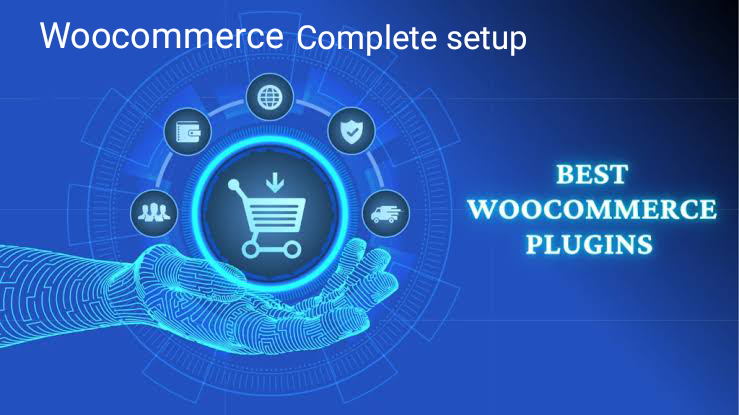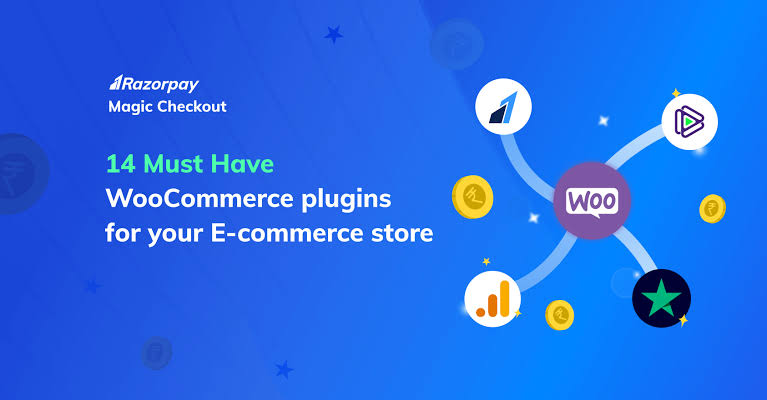WooCommerce Complete Setup: A Comprehensive Guide
WooCommerce is the most popular eCommerce platform for WordPress, powering over 28% of all online stores. A complete WooCommerce setup involves multiple steps to create a fully functional, secure, and optimized online store. This guide will walk you through the entire process.

1. Pre-Installation Requirements
Before installing WooCommerce, ensure your hosting environment meets these requirements:
- WordPress 5.6 or newer
- PHP version 7.4 or greater
- MySQL 5.7 or MariaDB 10.3 or greater
- HTTPS support (SSL certificate)
- Recommended hosting with at least 2GB RAM
2. Installation Process
Step 1: Install WooCommerce Plugin
- Navigate to WordPress Dashboard > Plugins > Add New
- Search for “WooCommerce”
- Click “Install Now” then “Activate”
Step 2: Run the Setup Wizard
After activation, the WooCommerce setup wizard will launch automatically. This guides you through:
- Store setup (location, currency, product types)
- Payment gateway configuration
- Shipping options
- Recommended extensions
3. Basic Configuration
General Settings
- Go to WooCommerce > Settings
- Configure:
- Store address
- Default customer location
- Currency options
- Checkout, account, and privacy pages
Products Configuration
- Set up product display settings
- Configure inventory management options
- Enable/disable reviews
- Set up downloadable products if needed
4. Payment Gateway Setup
WooCommerce supports multiple payment methods:

- PayPal Standard: Easy setup with just your PayPal email
- Stripe: For credit card payments (requires API keys)
- Bank Transfer: Manual payment method
- Cash on Delivery: For local stores
- Additional gateways available via plugins
Configure at least two payment methods to provide customer flexibility.
5. Shipping Configuration
Shipping Zones
- Create zones based on geographic regions
- Set shipping methods for each zone (flat rate, free shipping, local pickup)
- Configure shipping classes for different product types
Shipping Options
- Set default shipping destination
- Configure shipping calculator display
- Enable shipping labels if using WooCommerce Shipping
6. Tax Configuration
- Enable taxes if required
- Set tax rates based on location
- Configure tax display settings
- Set up tax classes for different product types
7. Product Setup
Adding Products
- Go to Products > Add New
- Enter product name, description, and images
- Set pricing (regular and sale prices)
- Configure inventory (SKU, stock quantity)
- Set shipping details (weight, dimensions)
- Add product categories and tags
Product Types
- Simple products
- Variable products (with variations)
- Grouped products
- External/Affiliate products
- Subscription products (with WooCommerce Subscriptions extension)
8. Store Pages Setup
WooCommerce automatically creates these essential pages:
- Shop page (displays all products)
- Cart page
- Checkout page
- My Account page
Customize these pages to match your store’s design and branding.
9. Theme Selection and Customization
Choose a WooCommerce-compatible theme:
- Storefront: Official WooCommerce theme
- Astra: Fast and customizable
- OceanWP: Feature-rich eCommerce theme
- Flatsome: Popular WooCommerce theme
Customize your theme:
- Set colors and fonts
- Configure header and footer
- Optimize product display
- Ensure mobile responsiveness
10. Essential Extensions
While WooCommerce is powerful out-of-the-box, these extensions add critical functionality:
Must-Have Extensions:
- WooCommerce Payments (for credit card processing)
- WooCommerce Shipping (for label printing)
- WooCommerce Subscriptions (for recurring payments)
- Product Bundles (for grouped products)
Recommended Extensions:
- Advanced Shipping Packages
- Product Add-ons
- Mailchimp for WooCommerce
- Yoast SEO for WooCommerce
11. Security Setup
Essential Security Measures:
- Install SSL certificate (HTTPS)
- Set up regular backups
- Install security plugins (Wordfence, Sucuri)
- Enable two-factor authentication
- Limit login attempts
- Keep all plugins and themes updated
12. Performance Optimization
Speed Optimization:
- Implement caching (WP Rocket, WP Super Cache)
- Optimize images (Smush, ShortPixel)
- Use a CDN (Cloudflare, StackPath)
- Enable lazy loading
- Optimize database regularly
Server Optimization:
- Use PHP 8.0+
- Implement OPcache
- Consider dedicated/VPS hosting for high-traffic stores
- Enable GZIP compression
13. Marketing Setup
Basic Marketing Tools:
- Set up coupons and discounts
- Configure email notifications
- Implement product reviews
- Set up related products
Advanced Marketing:
- Install Google Analytics with eCommerce tracking
- Set up Facebook Pixel
- Configure abandoned cart recovery
- Implement email marketing integration
14. Testing and Launch
Before launching:
- Test all payment methods
- Verify shipping calculations
- Test checkout process
- Check on multiple devices
- Verify all links and forms
- Test account creation and password recovery
15. Maintenance Plan
Ongoing Tasks:
- Regular plugin and theme updates
- Daily backups
- Security scans
- Performance monitoring
- Inventory management
- Customer support system setup
Conclusion
A complete WooCommerce setup involves careful planning and execution across multiple areas – from initial installation to ongoing maintenance. By following this comprehensive guide, you’ll establish a solid foundation for your online store that’s secure, functional, and optimized for growth. Remember that eCommerce is an ongoing process, and you should continually monitor analytics, gather customer feedback, and adapt your store to meet evolving market demands.